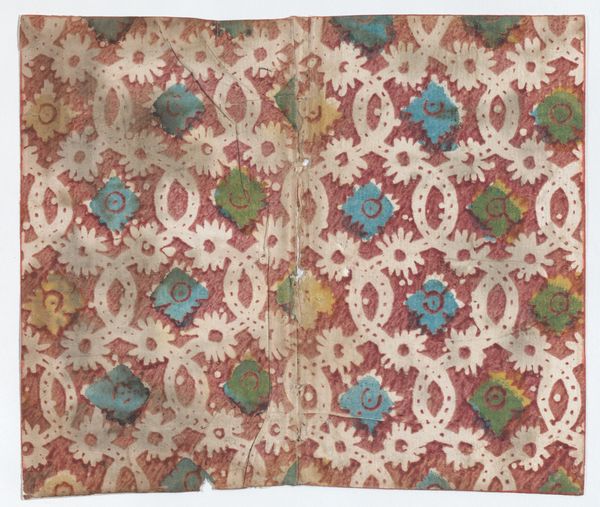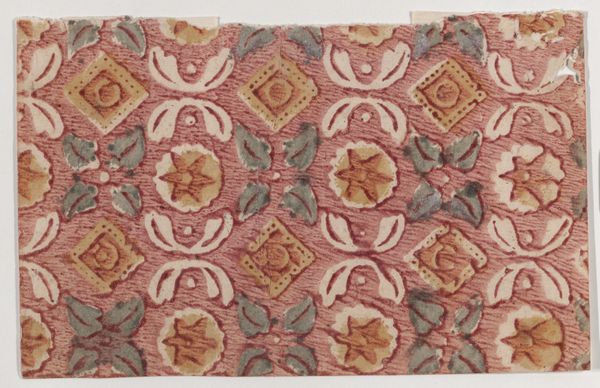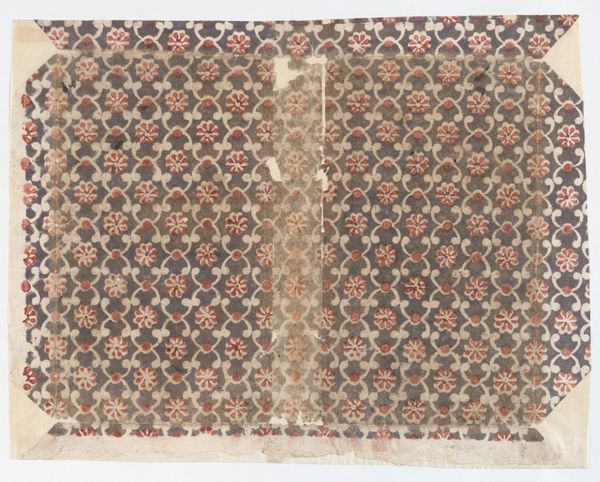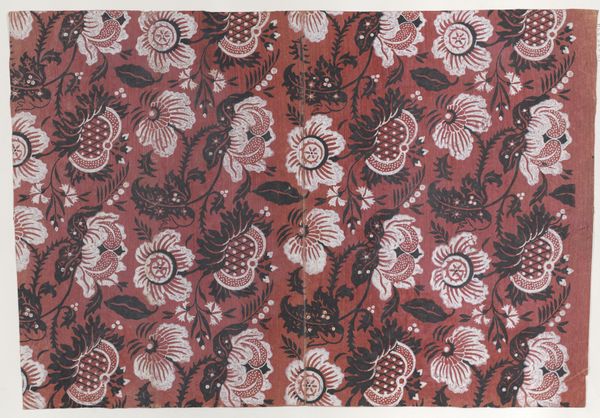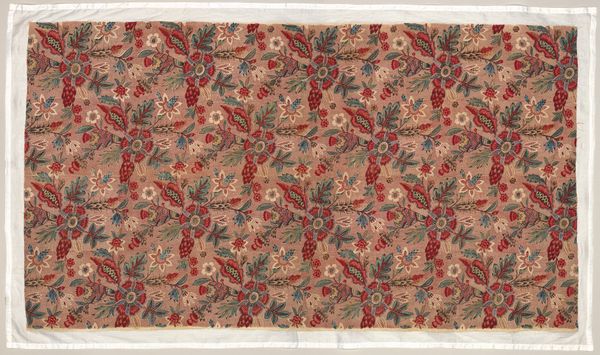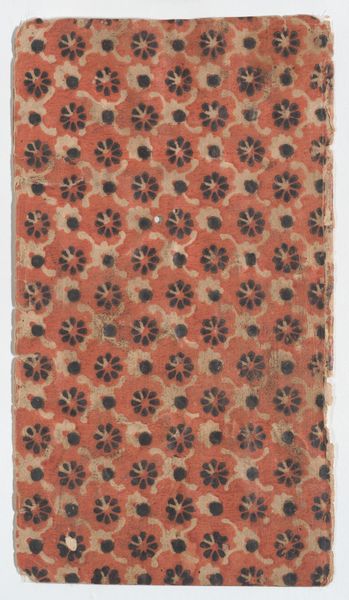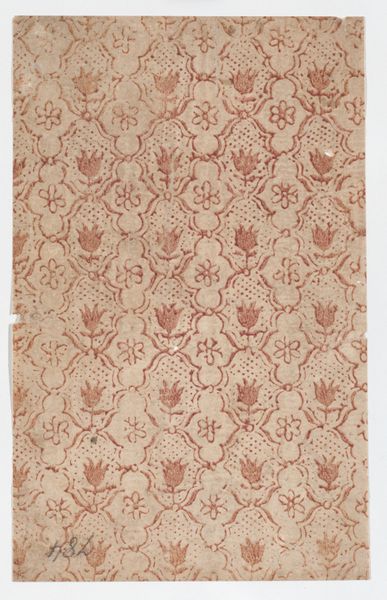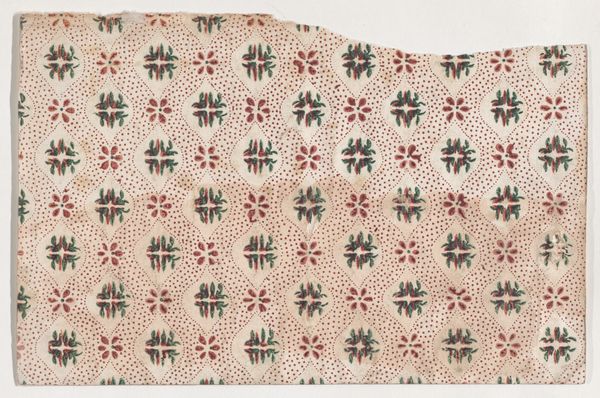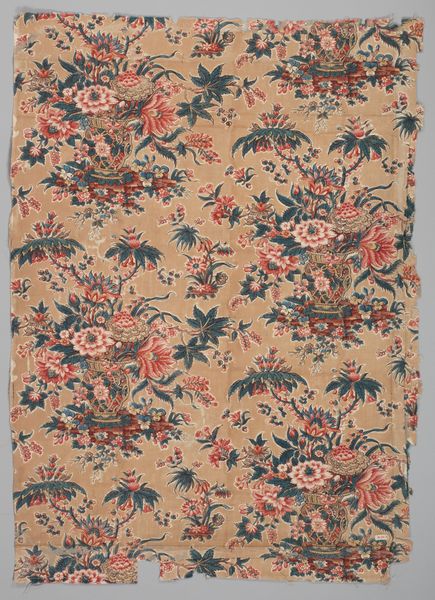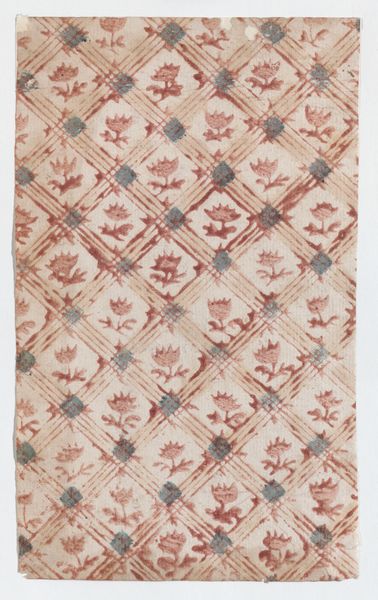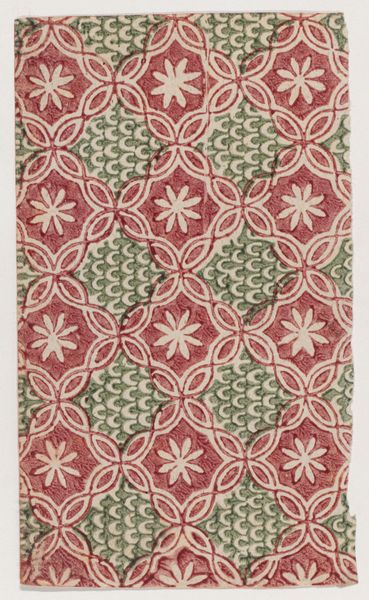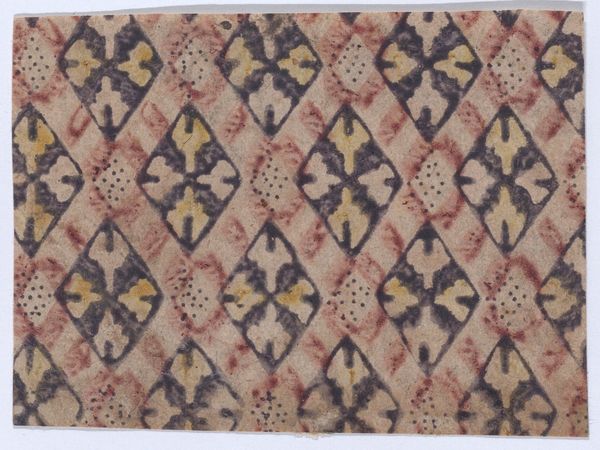
Sheet with overall lattice pattern with rosettes 1800 - 1900
0:00
0:00
drawing, print, textile
#
drawing
#
organic
# print
#
textile
#
pattern design
#
organic pattern
#
pattern repetition
#
textile design
#
decorative-art
Dimensions: Sheet: 6 13/16 × 10 1/8 in. (17.3 × 25.7 cm)
Copyright: Public Domain
Curator: Looking at this "Sheet with overall lattice pattern with rosettes," created sometime between 1800 and 1900 by an anonymous artist, it strikes me as more than just a decorative design. The intention here goes far beyond simple aesthetics. It speaks volumes about societal norms, textile production, and perhaps even subversive expressions embedded within the domestic sphere. Editor: My first thought? Wallpaper from grandma’s house, but make it subtly haunted. I mean, it's lovely in its way, like a faded memory of a garden. The colors are so muted, almost ghostly. Gives you this peculiar feeling, like maybe the flowers are watching you. Curator: The work, whose home today is the Metropolitan Museum of Art, offers insight into how patterns became instruments for propagating certain values or reflecting particular historical moments. In decorative arts, motifs weren't just pretty pictures, you see, but carefully considered messages. Think about labor, colonialism, and the hidden languages of design used during periods of social change. Editor: Absolutely, hidden languages. Those interconnected loops forming a sort of cage for the rosettes--it's visually interesting! I get this tension between containment and growth. Maybe the artist was wrestling with those constraints? Did the loops imprison the flowers, or did they give the flowers freedom to be contained? And then, the slightly unsettling faded rose color. Was that deliberate or from age? It completely shifts the meaning, doesn’t it? Curator: It also leads us to examine who designed, produced, and consumed pieces like this. This type of pattern production could provide insight into gender roles. And the rosettes themselves—were they celebrating growth and natural beauty, or being domesticated into conformity through their arrangement? The symbolism within simple organic forms demands further study through critical feminist perspectives. Editor: I guess that's what is great, isn't it? What looks simple turns out to have hidden secrets! Maybe a seamstress was making some silent rebellion, stitch by stitch. Anyway, now I won’t ever look at my floral tea set the same way! Curator: Indeed. By engaging with this patterned piece critically, we open possibilities for reflecting upon the complex network connecting artistic creation, labor dynamics, cultural values, and hidden subversive statements! Editor: It is interesting to see that a "simple" artwork that reminds us about grandma’s home decor, can in reality transmit deeper historical and symbolic connotations!
Comments
No comments
Be the first to comment and join the conversation on the ultimate creative platform.
